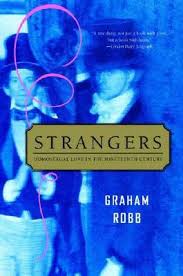Published in: July-August 2004 issue.
 Strangers: Homosexual Love in the Nineteenth Century
Strangers: Homosexual Love in the Nineteenth Century
by Graham Robb
W.W. Norton and Company. 342 pages, $26.95
Graham Robb’s Strangers: Homosexual Love in the 19th Century stands out among recent books for its appreciation of an explicitly gay liberationist scholarly approach to our forgotten but precious past. In his elegantly accessible account of how gays and lesbians lived and loved in Europe and North America in the 19th century, Robb embraces the idea that gay people have always been around and have even been valued members of society.
The book is divided into three lucid sections






